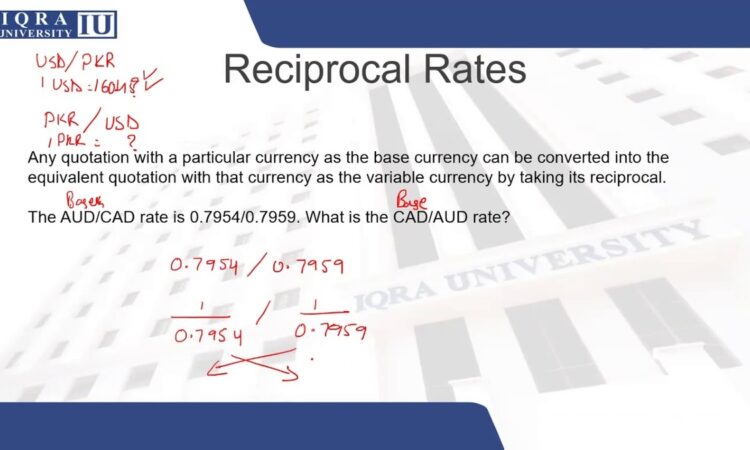
Decoding Reciprocal Currencies: A Deep Dive into the EUR/USD Pair

In the bustling universe of the foreign exchange (FX) market, reciprocal currencies stand as a unique entity. These currency pairs, where the U.S. dollar (USD) is not the base currency but the counter or quote currency, form a significant part of global FX trading. Serving as the backbone of international trade and investment, these currencies facilitate the seamless exchange of currencies for business and speculative purposes. Typically, they are quoted in terms of U.S. dollars per unit of foreign currency, a method often referred to as ‘European’ terms.
Understanding Reciprocal Currencies
Unlike common quotes where the USD is the base currency, reciprocal currencies turn the tables. Major reciprocal currency pairs include EUR/USD (euro to U.S. dollar), GBP/USD (British pound to U.S. dollar), and AUD/USD (Australian dollar to U.S. dollar). For instance, an NZD/USD quote of 0.70 implies that one New Zealand dollar can be exchanged for 70 U.S. cents.
Insights into EUR/USD Currency Pair
Among these pairs, EUR/USD holds a significant place. A detailed analysis of its recent trading sessions, including price movements, resistance, and support levels, helps understand its dynamics. Factors such as the US dollar’s behavior and the Federal Reserve’s interest rate forecasts contribute significantly to this currency pair’s performance.
Trading Patterns and Market Sentiments
The EUR/USD pair’s trading patterns offer a glimpse into its movement during specific periods, such as the holiday season or in response to U.S. jobs data. Behavioral sentiment and speculative outlook for the currency pair also provide potential price ranges and key levels to observe. U.S. inflation data and the return of full trading volume after the holiday period also play a vital role in shaping the EUR/USD pair’s trajectory.
Technical specifications such as lot sizes and pip values are essential for traders involved in trading this pair. Also, potential support and resistance levels, as well as the possibility of trend reversal based on MACD and EMA indicators, contribute to the long-term outlook for the pair. The impact of Eurozone PMI, German retail sales, and US non-farm payrolls report on the currency pair also forms a crucial part of the analysis.
In conclusion, understanding reciprocal currencies, with a focus on EUR/USD, is key to navigating the complex landscape of the foreign exchange market. From trading patterns and market sentiments to technical specifications and global economic events, every aspect plays a crucial role in shaping the path of these currency pairs.
